Where have we been and where are we going: The HRCS Competency Model from Round 1 to Round 8
Key Takeaways:
- The evolution of the HR Competency model can be traced to the data collected during each round and the consistent maturation of the HR profession.
- Individual rounds of the HR Competency Study have yielded unique data with competencies specific to the needs of that time period.
- The HR Competency model from Round 8, points to the key competencies that will deliver the best result for individuals, stakeholders, and businesses.
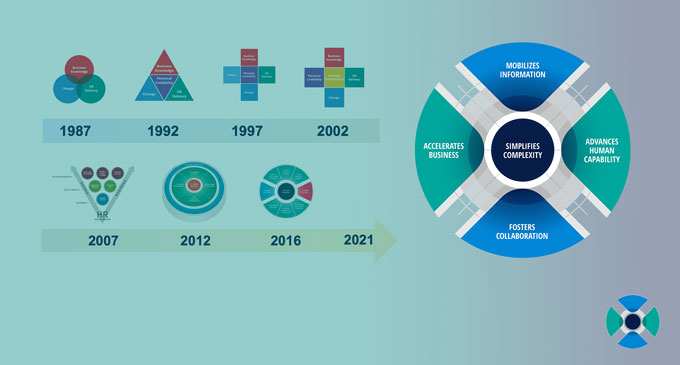
Where have we been and where are we going: The HRCS Competency Model from Round 1 to Round 8
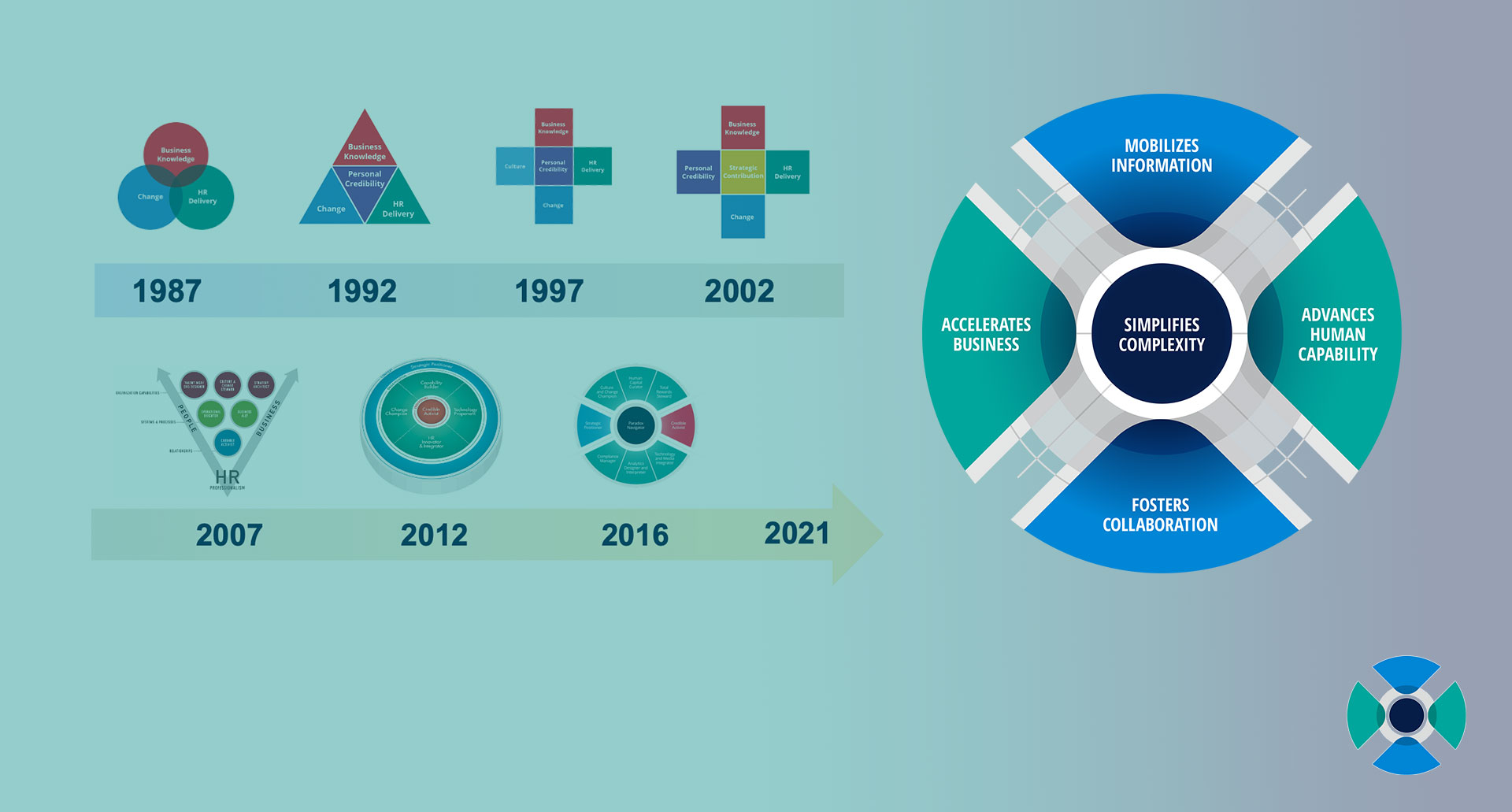
One element of the creative process that appears in nearly all descriptions, whether they list six steps or four, focuses on artistic creation or scientific exploration, is the importance of expansion and narrowing. Often this part of the process describes what happens when the creator starts with an impulse or idea and then expands and explores every possibility and implication only to then narrow to what is essential. Certainly, one of the most dramatic illustrations of this idea can be seen in the work of the poet writing haiku. From an initial impression or impulse, the artist then explores every aspect of the subject, considers every possible word, and then settles on the essential few limited syllables of their poem. This expansion and narrowing can take place in limited discrete ways over very short periods or can take place at the macro-level and only be perceived over time.
The Human Resources Competency Study (HRCS) has grown and changed over the past 30 years. From the initial iteration focusing on three domains, the model grew to nine domains by Round 7 and has now narrowed to five in Round 8. Many have asked about the connection between the past versions—especially the most recent—and the latest. We found that about 30 to 40% of HR competencies evolved each round (every 4 to 5 years). In this most recent Round 8, there has been even more evolution given the global health, social, technology, and other challenges of 2020/21 which was when the data were collected.
This clear evolution and the simplification of past complexity can be traced not only to the results of the survey but to the maturity of the HR profession. At this point, certain factors no longer have to be called out and enumerated but have become part of the fabric of the function. For example, some of the previous domains (e.g., change champion) are now woven into the other domains. Change or agility in current terms is an integral part of Accelerating Business, not a separate activity. In addition, many of the domains are now richer and more fully founded upon the prospect of HR professionals being immersed in the business and partnering in integrated and seamless ways.
Let’s briefly review the evolution of the domains that have been revealed in the study and how they have led to where we are today. Then we will focus on the five domains of the current model from Round 8 of the HRCS and how they relate specifically to the model we have come to know so well during the past five years since Round 7 was completed. It is important to remember that all 8 rounds were based on extensive research with data from over 125,000 total respondents and the participation of most of the leading HR Associations in the world.
Summary of HR Competency Models 1-7
In 1987, the first model had three domains: Business Knowledge, HR Delivery, and Change. These were the critical competencies for Human Resources at that time. These three, in and of themselves, marked an important shift from the days of the “Personnel Office,” where all that was expected and delivered were the most basic transactional functions related to record-keeping and payroll. This shift called for new expertise and competence from HR professionals, but only hinted at the dramatic changes to come.
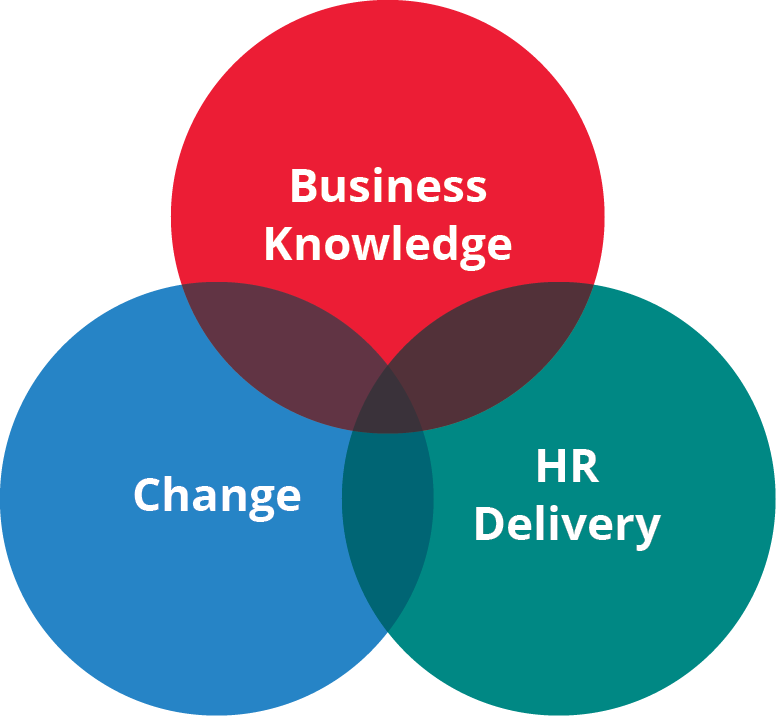
In 1992, the second round of the study was completed and in addition to the original three, Personal Credibility appeared as a domain for the first time. In some ways, this was a bit of a mistake from the first round. Without Personal Credibility, the other domains could not happen. Now that it was called out, it added an element of professionalism for the function and underscored higher expectations of HR practitioners and professionals. It underscored the growing need for competence at the individual level in order for the function to be able to deliver for the business. As we began to understand more clearly the impact that “human capital” has on results, the Personal Credibility of HR professionals became increasingly important. In order to have a voice and a seat at the table to be able to influence the business, HR professionals had to be trusted, dependable, competent, and caring—or simply stated: personally credible. The extent to which HR professionals were both seen as personally effective and able to impact business results were influenced by their Personal Credibility.
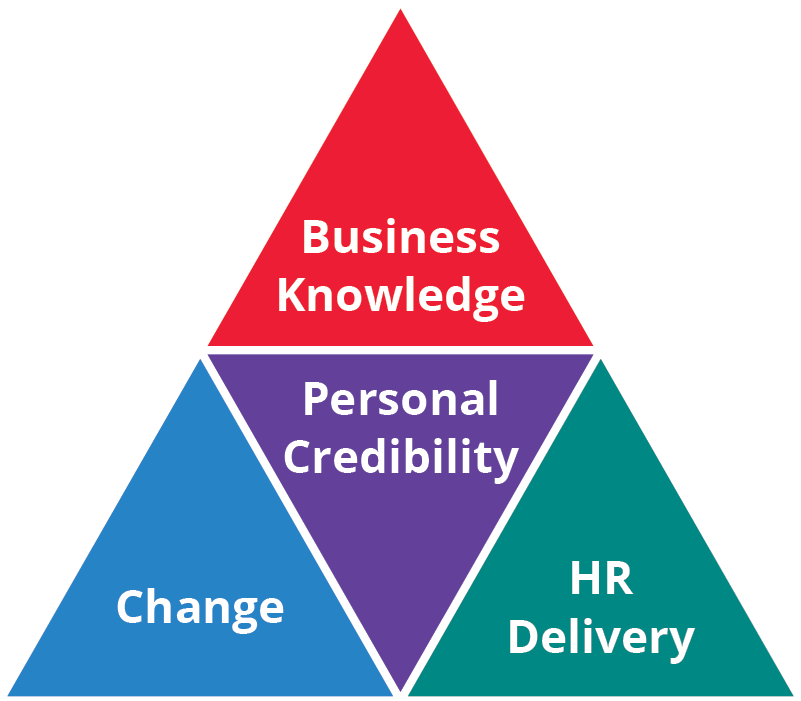
Round 3 appeared in 1997, and now there were five domains as Culture was added to the existing domains from the previous rounds of the study. While the term has been much debated—well before its appearance in the HRCS—this call-out recognized the critical role that HR plays in developing not only individuals but the organization as a whole. The emergence of culture as a critical deliverable of HR signaled the emerging recognition of the intangible value and HR’s role in shaping the culture through its stewardship of people practices.

With Round 4 of the study in 2002, the model continued to call out five domain areas but culture and change were combined into strategic contribution. This was the first time the model had a domain that used the word strategic and the fact that it came as a combined replacement for culture and change illustrates the growing relevance of HR’s contribution to not only the current needs of the business, but its future as well. Culture and change came together because if the culture did not change and the change did not include culture, neither would happen. HR Technology began to emerge as a subfactor in the HR delivery domain and was initially most concerned with things like internal HR systems—HRIS and LMS—and appeared as this area became more and more critical to the running of HR functions. The mention of technology in this round was but a preview of ever more technology advances that would shape HR.
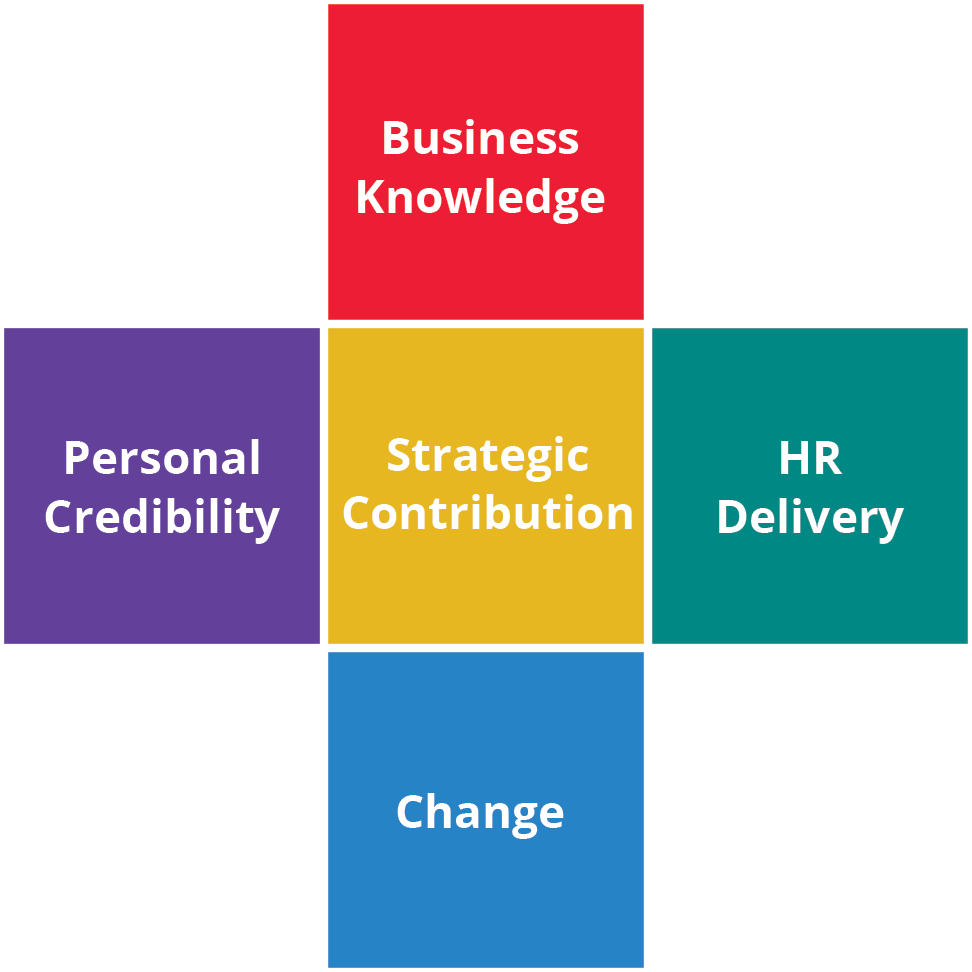
In 2007, Round 5 had grown to six domains and there were significant shifts in the names and in the focus areas. Of particular note was a change from Personal Credibility to Credible Activist as well as a change from Business Knowledge to Business Ally. It is easy to see the more active role of HR in these pursuits and areas of focus within the domains—these are impactful critical roles focused on action and not simply descriptors of types of knowledge seen in earlier rounds of the study.
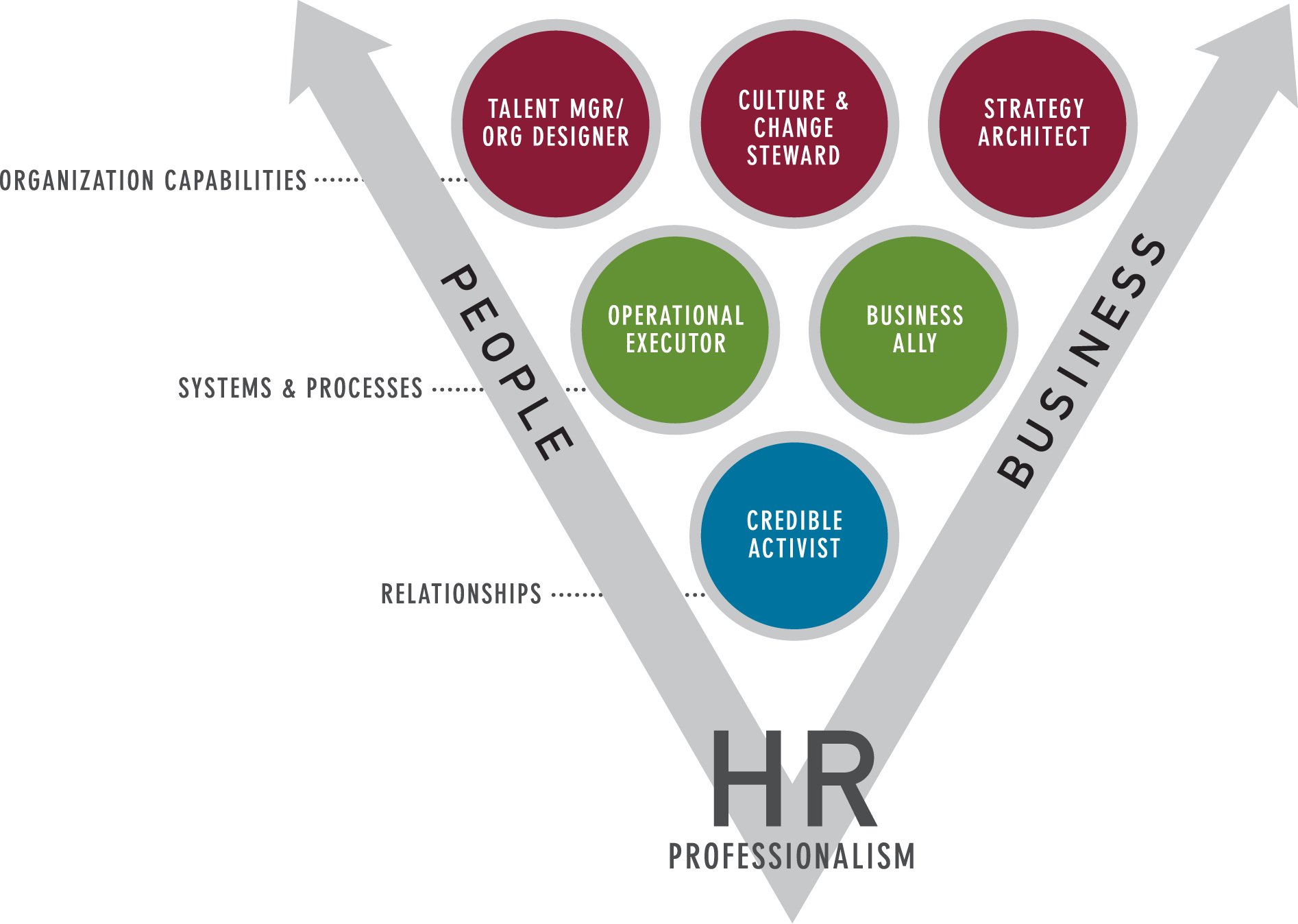
Round 6 appeared in 2012. While it was still six domains, several important changes characterized the model as it called for a far more active role from HR professionals. Business Ally and Strategic Architect were combined and were now known as Strategic Positioner, bringing together the more passive idea of simply having business knowledge and now utilizing it to guide, or position, the business into the future. Talent Manager and organizational designer had become HR Innovator and Integrator, again emphasizing the active role HR needed to take in not just managing, but in leading both people and organization solutions. Operational Executor had become Technology Proponent—once again showing how HR needed to be in the lead on technology issues.

All of that leads to Round 7 of the study in 2016. The original 3 domains had now grown to 9 and Michael Phillips distinctly recalls presenting the results of the study to a ballroom full of HR professionals in Columbus, Ohio and “having several people come to me during the morning break to ask why the word “innovator” no longer appeared in the domains, why ‘collaboration’ and ‘networking’ did not appear in the domains, why D&I did not merit its own domain area, and the list went on and on.” While remaining true to the research and the changing and growing role of HR, the model had expanded in such a way that there were those who wanted every possible function and activity of HR to be called out and given its own space in the model. It felt as though the function was breaking into very specific pieces and sometimes siloed areas. As the world became more complex, the HR competency model became more complex in response. To derive the number of domains, the research team did literally hundreds of statistics called factor analysis to determine which number of domains best fit with the data. Frankly, the research team pleaded with our statistician to give a more simple model, but he said that the data are the data and our job was to create the narrative to explain the data, not to make the story create that data. After all, analytics on HR analytics seem legitimate and important.
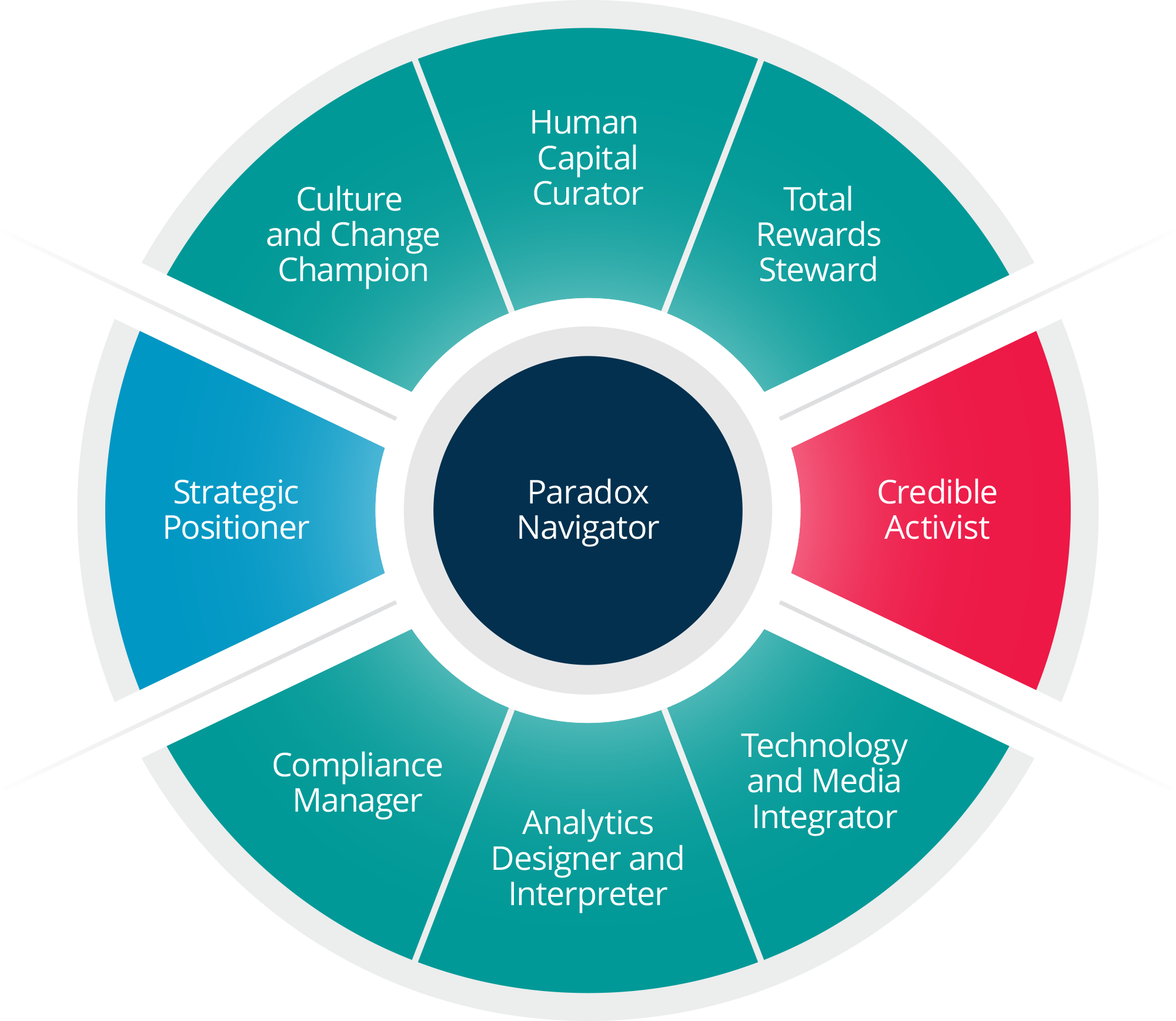
New HR Competency Model
It should be no surprise that after so many years of expanding the model and the correlated growth in the HR function that the time had come for narrowing and focusing. Not only did that happen with Round 8 of the HRCS, but the fact that the domain at the center of the model is Simplifies Complexity might be the best indicator that the new model itself is a metaphor for one of the most important competencies of HR—especially in the current highly complex and difficult cultural context.
.png)
Our research shows (through factor analyses) that the previously separate domains combined in how HR work is done. For example, Paradox Navigator items on the survey now show up in nearly every one of the five domains. Paradox Navigator is not an isolated skill set, but a part of everything HR does. The other major change is shifting the words, which is our choice as authors. The first seven rounds focused on “roles” with an adjective and noun (Paradox Navigator; Strategic Positioner). Given the increased attention to human capability issues in 2020/21, we felt it appropriate to pivot to verbs: accelerates, advances, mobilizes, fosters, simplifies. This shift implies less focus on the “role” of HR and more on the “actions” of HR regardless of the role.
The overall HRCS model raises a rather simple query: how can HR accelerate the business through advances in human capability. This simple connection has three general pathways: information, relationships, and simplicity. So, if someone were to say, “What should HR do to be effective?” the easiest answer is “Master how to accelerate business through advances in human capability.” People would probably nod their heads because it sounds good, but we need to go deeper to really see what that means.
The HRCS Round 8 model itself is best read starting on the left and recognizing that all of this is indeed about Accelerating the Business. Nothing we do in HR matters if that is not the result. In the previous model, this activity was called out as “Strategic Positioner” and while that corresponded well to the growth of HR as a strategic partner to the business, it did not fully embrace the next step which is thinking about HR from the outside-in. The sub-factors of “Accelerates the Business” are “Generates Competitive (or market) Insights,” “Influences the Business,” “Gets the Right Things Done,” and “Drives Agility.” Those powerful action verbs clearly call upon HR professionals to not only know the business but know the business context and what is happening in the broader world. What a powerful transformation we have seen in this area—from simply having knowledge of the business to becoming strategic and now thinking from the outside-in.
On the right side of the model, “Advances Human Capability” is all about how we accelerate the business. A human capability blueprint includes individuals (talent, workforce, people, competence), organization (culture, workplace, process, and capability), leadership at all levels, and the HR department work. HR is NOT just the “people” function. Human capability is about building integrated solutions and not just HR tasks and processes. The sub-factors in this domain are “Elevates Talent” (focused on individuals), “Delivers HR Solutions” (focused on organizations), “Champions Diversity, Equity, and Inclusion.” (clearly a part of today’s social agenda). This more holistic take on human capability began as simply “HR Delivery” in the early rounds of the study and then grew to become Talent Management, HR Innovator, and eventually “Human Capital Curator” and “Total Rewards Steward.” Now we have the richer concept of Advancing Human Capability that is about more than the HR solutions, that are in many ways the table stakes of the function, but now, a focus on the idea that everyone needs to be elevated and lifted through development and championing DEI. When everyone is engaged and empowered to bring their best and are then rewarded and recognized, we build the capability needed to accelerate the business.
Clearly, the job of the HR professional is to accelerate business by advancing human capability. The model then provides three pathways to do that. Starting at the top, “Mobilizes Information” is what began in Round 4 as simply HR Technology. That function then began to mature and was referred to as “Operational Executor,” then “Technology or Information Proponent,” and most recently in Round 7 was split into three: “Technology and Media Integrator,” “Compliance Manager,” and “Analytics Designer and Interpreter.” Now in Round 8, those areas have come back together as one, but in a function that truly looks at how we can use data to solve problems. Once again, this competency focuses on an outside-in perspective as we pay close attention to the broader social agenda to guide the company. The sub-factors are “Leverage Information and Technology,” and “Guides Social Agenda.”
At the bottom of the model is the next pathway, “Fosters Collaboration.” The two sub-factors here are “Manages Self,” and “Builds Relationships.” This personal focus was what was known in previous rounds as “Personal Credibility” and then “Credible Activist.” Now the domain not only focuses on good self-management but on the outcome of that which is building relationships. Simply put, if you can’t manage yourself, you are not going to be able to manage others and if you can’t build relationships there is no way that you are going to be able to influence and guide the business. The position of this domain at the bottom of the model emphasizes its foundational quality—without this, you cannot be effective in any of the other areas.
Finally, we come to the middle of the model. “Simplifies Complexity” is the domain that mediates all other competencies in the model and in a very tangible way, everything that we do in the organization. In the previous model, “Paradox Navigator” sat in the center and was very much about determining how to function between two competing demands. This new domain has echoes of that but is far more comprehensive as it calls on us to be able to find priority amongst competing demands. It sits in the middle of the model because it forces us to focus on doing what is right and doing it in the right way. If you think about the evolution from “Culture and Change Champion” and “Paradox Navigator” in the previous round, you begin to see the straightforward clarity HR professionals must provide to the organization as they simplify the complex. The sub-factors for this domain are “Thinks Critically” and “Harnesses Uncertainty.” So, there is an added element to simplifying complexity that requires the ability to move forward amidst uncertainty and not to get caught in the trap of analysis paralysis.
Conclusion
The 30+ year history of the HRCS in many ways exemplifies the best of a research-based, creative process. It has been characterized by both expansion and narrowing as it carefully shows what is important within HR and to HR’s most important stakeholders. Even more, it is not a made-up wish list of HR competencies—too common in our field. It is based on rigorous research to determine the competence domains and is true to the analytics that others often only call for. These competencies are linked to personal, stakeholder, and business results. Competencies matter because they help deliver overall business results, but in this round, they also help the HR professional create a more effective HR department and deliver business capabilities that have even more impact on those results.
This most recent round takes a major step in representing one of its domains in simplifying the complex and presenting the research findings in a model that drives the function towards its rightful place as the true center of any organization. It is all about the people and the people are the heart of the business. How lucky we are in the HR profession to be the stewards of the most critical, vital, and important resource in our company’s arsenal.
So, there you have a brief overview of the various rounds of the HRCS over more than 30 years. While much has changed, that change has been a clear evolution of central ideas and functions rather than any type of wild swings or revolutionary shifts. What we need to do is clear; how we do it has become much richer and much more strategic over time. Now we have the chance to further the evolution as we focus on HR from the outside-in and not just as partners but as integrated, indispensable parts of the business.
Ready to implement the latest HR Competency Model in your HR department? Build these critical competencies in your HR professionals with the Dave Ulrich HR Academy.